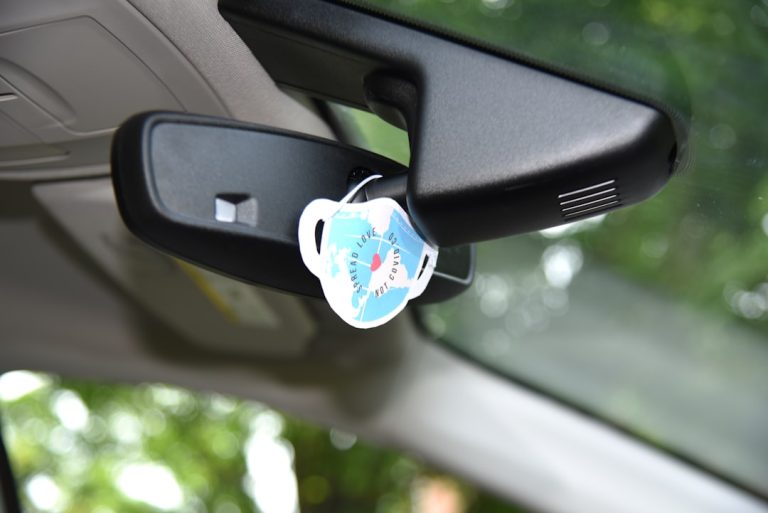My Guide to Choosing the Best Sustainable Clothing Brands.
My Guide to Choosing the Best Sustainable Clothing Brands
In a world overflowing with fast fashion and fleeting trends, finding clothing that aligns with your values can feel like navigating a dense jungle. Every brand seems to claim “eco-friendly” or “sustainable,” yet the reality often feels murky, obscured by clever marketing and vague promises. That’s precisely why I decided to create My Guide to Choosing the Best Sustainable Clothing Brands – a practical, no-nonsense framework based on my own journey and research, designed to cut through the noise and empower you to make truly conscious choices.
This isn’t just another list of brands; it’s a deep dive into how I personally evaluate and select clothing that respects both people and the planet. My journey into sustainable fashion began out of frustration with disposable clothing and a growing awareness of the industry’s significant environmental and social footprint. I realized that to truly make a difference, I needed a systematic approach – one that went beyond surface-level claims. From scrutinizing materials and investigating supply chains to understanding the nuances of ethical labor, I’ll share the criteria that matter most to me, helping you build a wardrobe you can feel genuinely good about, piece by conscious piece. Let’s embark on this journey together, transforming uncertainty into informed action.
Beyond the Buzzwords: Defining My Sustainable Brand Criteria
Before I even begin looking at specific brands, my first step in choosing sustainable clothing is to clearly define what “sustainable” means to me. It’s more than just a vague feeling; it’s about measurable impacts across several key areas. I’ve learned that true sustainability encompasses environmental responsibility, ethical labor practices, and a commitment to longevity and circularity. Without these foundational pillars, a brand’s claims often fall short, becoming mere greenwashing. My personal criteria serve as a robust filter, ensuring that my choices reflect genuine commitment, not just marketing.
Unpacking the “Eco-Friendly” Claims I Scrutinize
When a brand boasts about being “eco-friendly,” my guide immediately prompts me to dig deeper. What specific environmental aspects are they addressing, and with what level of measurable impact? I focus on several critical areas, understanding that true environmental stewardship is multifaceted:
- Navigating the Material Maze: From Organic to Regenerative: Are they using organic, recycled, or innovative low-impact materials? I look for certifications like Global Organic Textile Standard (GOTS) for cotton, ensuring it’s grown without harmful pesticides and processed responsibly. For synthetics, recycled polyester (rPET) made from post-consumer waste is a good sign, reducing reliance on virgin plastics. I also pay attention to newer innovations like Lenzing’s Tencel™ and Ecovero™ for rayon alternatives, which boast closed-loop production systems that recover solvents and minimize water use. The ultimate goal for me is seeing brands invest in regenerative agriculture practices, which aim to restore soil health and biodiversity, going beyond just “less harm” to “active good.”
- Beyond the Factory Gates: Water, Energy, and Chemical Stewardship: What about water usage, chemical management, and energy consumption in their production facilities? The fashion industry is notoriously water-intensive and a significant polluter. Brands that invest in closed-loop water systems (reusing water), renewable energy sources (solar, wind), and non-toxic dyes always catch my eye. I look for evidence of wastewater treatment and adherence to strict chemical management protocols, such as those verified by OEKO-TEX or bluesign®. Transparency here is key; general statements like “we use less water” aren’t enough – I want to see how much less, and how they achieve it.
- Closing the Loop: Embracing Circularity and Waste Innovation: Do they have strategies for minimizing textile waste during production, or even take-back programs for end-of-life garments? This shows a commitment to a circular model, where products and materials are kept in use, rather than a linear “take-make-dispose” one. Brands offering repair services, encouraging resale, or even designing for recyclability (e.g., mono-material garments) demonstrate a forward-thinking approach that is a significant part of my criteria. Minimizing pre-consumer waste (scraps from cutting) and post-consumer waste (discarded clothing) is vital for reducing landfill burden.
- Demystifying the Carbon Footprint: While harder to quantify as a consumer, I appreciate brands that transparently report their carbon emissions across their supply chain (Scope 1, 2, and 3) and outline clear, science-based reduction targets. This indicates a serious commitment to addressing climate change, moving beyond vague “carbon neutral” claims to actual decarbonization strategies.
The Human Element: Why Fair Labor is Non-Negotiable in My Choices
For me, sustainability isn’t just about the planet; it’s equally about the people who make our clothes. My guide places immense importance on ethical labor practices. I believe that a garment cannot be truly sustainable if it’s produced at the expense of human dignity. This means ensuring fair treatment and respect for every individual involved in the supply chain, from cotton farmers to garment factory workers. Ignoring the human cost makes any “eco-friendly” claim hollow.
- Ensuring Dignity in Production: A Look at Living Wages and Worker Rights: Workers should earn a living wage that allows them to meet their basic needs and support their families, not just the legal minimum wage, which often falls far short of a living wage. I scrutinize brands for evidence of fair wage policies and independent verification. Furthermore, factories must be safe, hygienic, and free from forced labor, child labor, and discrimination. This includes reasonable working hours, access to proper equipment and training, and robust grievance mechanisms. The tragic Rana Plaza collapse in 2013 underscored the critical importance of factory safety and worker empowerment, a lesson that must never be forgotten.
- Transparency as a Tool: Tracing the Ethical Journey of a Garment: I look for brands that support worker voice, allow for unionization, and invest in their employees’ well-being and development. This often manifests in partnerships with organizations that advocate for worker rights or in brands publishing their factory lists. Brands that are transparent about their supply chain – detailing where their clothes are cut, sewn, and finished – and actively work with organizations like Fair Trade Certified or participate in initiatives like the Fashion Revolution’s Transparency Index are high on my list. This level of openness allows for external scrutiny and encourages continuous improvement.
Peeling Back the Layers: Investigating a Brand’s True Green Credentials
Once I have my core criteria established, the next crucial step in my guide is the actual investigation. This is where I move beyond marketing slogans and delve into verifiable information. It requires a bit of detective work, but it’s essential for making truly informed decisions. A brand’s commitment to sustainability should be evident not just in what they say, but in what they do and how transparent they are about it.

I start by visiting the brand’s website, specifically looking for a dedicated “sustainability” or “impact” section. A strong, credible brand will have detailed information, not just vague statements. I search for comprehensive sustainability reports, third-party audits, and clear explanations of their practices, backed by data. If this information is hard to find, overly simplified, or filled with jargon without substance, it’s often a red flag in my book. A truly sustainable brand welcomes scrutiny and provides the tools for consumers to understand their impact.
Decoding the Seals of Approval: A Deeper Dive into Certifications
Certifications are invaluable tools in my guide to choosing sustainable brands because they offer independent verification of a brand’s claims. While no single certification covers everything, a combination of these gives me confidence, acting as a shortcut through complex information:
- GOTS (Global Organic Textile Standard): This is my gold standard for organic fibers, especially cotton. It ensures that textiles are truly organic, from the harvesting of the raw materials through environmentally and socially responsible manufacturing, right up to labeling. It covers ecological and social criteria, making it a comprehensive assurance.
- Fair Trade Certified: Essential for social sustainability. This certification guarantees fair wages, safe working conditions, and community development funds for farmers and factory workers in developing countries. It directly addresses the human element of the supply chain, empowering producers.
- B Corp Certification: While not specific to clothing, a B Corp certification indicates that a company meets high standards of verified performance, accountability, and transparency on factors from employee benefits and charitable giving to supply chain practices and input materials. It shows a holistic commitment to social and environmental responsibility across their entire business operations.
- OEKO-TEX Standard 100: This certification ensures that textiles are free from harmful substances, making them safe for human skin. While it doesn’t cover environmental production methods or social aspects, it’s crucial for my health and the health of the garment workers who handle these materials daily.
- bluesign®: This standard aims to minimize environmental impact throughout the textile supply chain, focusing on resource productivity, consumer safety, water and air emissions, and occupational health and safety. It’s a system that ensures sustainable production processes from the very beginning.
- Cradle to Cradle Certified™: This certification goes a step further, assessing products for human and environmental health across five categories: material health, material reutilization, renewable energy and carbon management, water stewardship, and social fairness. It promotes designing products for circularity from the outset.
Beyond Certifications: The Art of Critical Brand Assessment
While certifications are powerful, they are not the only piece of the puzzle. My investigation process extends to other indicators of genuine commitment:
- The Digital Footprint: What a Brand’s Website and Reports Reveal: I look for detailed annual sustainability reports, not just a glossy “about us” page. These reports should ideally be independently audited and provide specific goals, progress updates, and challenges. Do they publish their supplier list? Are they transparent about their carbon footprint, water usage, and waste generation? The level of detail and willingness to share both successes and struggles is a strong indicator of sincerity.
- Listening






